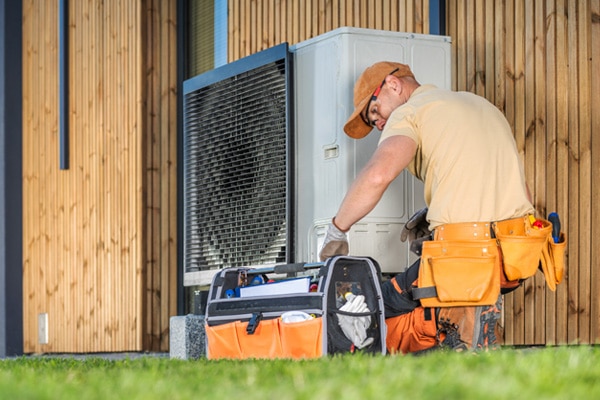This is assuming that the refinance is for a one-unit primary residence. Maximum LTV can depend on other loan characteristics like loan type and occupancy.
Cash-Out Refinance
Turn Home Equity Into Funds
What is a Cash-Out Refinance?
When you refinance your mortgage, you may have the option to "cash-out" and turn the equity you've built up in your home into funds you can use to achieve your financial goals.
You'll be replacing your existing mortgage with a new mortgage that comes with a new interest rate and revised loan terms. If the current market interest rate is lower, or your credit score has improved, you may even be able to secure a better interest rate for your new mortgage, in addition to turning your home equity into funds.
In addition to the general benefits of refinancing, you can use the funds with zero restrictions.
Your home still serves as collateral for your new mortgage, so remember that failing to repay the loan under the new terms could still result in foreclosure.

What Can I Use My Cash-Out Refinance For?
You can use the funds for anything you need, with no restrictions.
Here are some common uses:
Home Improvements
Knock out that home improvement project you’ve been putting off, or go all out and completely re-imagine your current home.
- Remodel your kitchen.
- Add on a new garage.
- Put on a new roof.
These types of investments not only can enhance your current living situation, but may also have a positive impact on the overall value of your home.
Debt Consolidation
You may be able to combine your high-cost/high-interest debt into a lower-cost/lower-rate single monthly payment.
- Credit Cards
- Personal Loans
- Lines of Credit
This may help lower your overall interest expenses and may help free up additional funds in your monthly budget.
Large Personal Expenses
Use the funds to pay for any large purchases or to cover ongoing expenses.
- Down payment for a second home, vacation home or investment property.
- School tuition and related costs.
- Starting or improving a business.
What Do I Need To Qualify?
You’ll need to ensure you meet the following requirements:
- Enough equity: We require that you maintain at least 20% in equity in your home in the new transaction, which equates to having an 80% Loan to Value Ratio.[1]
- Closing costs: Closing costs can range between 3%-6% of the loan amount. Eligible clients may be able to roll these closing costs into the new refinanced mortgage loan amount and pay nothing out-of-pocket at closing.
- Credit score minimum: Eligible borrowers may be able to qualify with a minimum credit score of 620.
- Debt-to-Income maximum: We compare your total monthly debt payments to your monthly income, called a debt-to-income ratio, to make sure you can handle the new loan payments. Maximum allowable DTI for a cash-out refinance may range from 36%-45% depending on loan type, borrower qualification requirements and other loan characteristics.
- Home appraisal: As part of the Refinance process, you may also need to have a home appraisal completed to verify the value of your home.
What Are the Benefits of Cash-Out Refinancing?
The primary benefit is access to a lump sum of funds that may be used to help achieve your financial goals.

There are some other benefits that could apply depending on your circumstances:
- Compared to other home lending options, you may get a lower interest rate.
- If the money is used to repair or improve your home, the interest may be tax-deductible.[2]
- If you're able to get a lower rate, you may be able to reduce your overall interest expense.
- By customizing your loan terms and/or getting a lower interest rate, you may be able to decrease your monthly payments, freeing up money in your budget.
What Are the Costs & Risks?
You'll need to pay closing costs, which can range from 3%-6% of the loan amount.
Eligible clients may be able to roll these closing costs into the new refinanced mortgage loan amount and pay nothing out-of-pocket at closing.
Some risks include:
- The possibility of foreclosure on your home if the loan is not repaid. This is true of all secured loans that use your home as collateral.
- Your total mortgage debt balance will increase, which may extend the time it takes you to pay off your mortgage.
- If you borrow more than you need, you would pay unnecessary interest expenses.
- If interest rates have increased, your new mortgage loan may come with a higher interest rate. This may increase your overall interest expense and monthly payment.
How Much Can I Take Out?
Many lenders require that you maintain a minimum amount of equity in your home after refinancing, such as 20%, which equates to having an 80% Loan-To-Value Ratio. This means you may be able to borrow up to 80% of your home's appraised value.[1]
For example, imagine your home is worth $500,000 and you owe $225,000. The total equity would be $275,000. If a lender loans up to 80% of the home’s value, your new mortgage could be as much as $400,000 ($500,000 x .8). After paying off the $225,000 balance on the current mortgage, you could potentially cash-out as much as $175,000 (minus closing costs).*
* This example is for illustrative purposes only.

What Are the Alternatives?
- Rate and Term Refinance
- Home Equity Line of Credit (HELOC)
Change the interest rate, loan terms and/or loan type of your existing mortgage.
Your existing mortgage balance gets paid off and you’ll get a new mortgage in the amount you still owe. Your new mortgage may offer better interest rates and/or provide more favorable loan terms.
Good for you if you don’t have an immediate need for funds to achieve your financial goals, but want to improve the rate and/or terms of your existing mortgage.
Get a lump sum of funds and ongoing access to additional funds, secured by the equity in your home.
You will get a new line of credit that requires a new, additional monthly payment (in addition to any existing mortgage payment you still may have).
Good for you if you know you need funds, but aren't sure how much you'll need or don't want to change the rate and/or terms of your existing mortgage.
How Do I Get Started?

- Confirm you have at least 20% equity built in your home.[1]
- Confirm your credit score is at least 620.
- Confirm your Debt to Income (DTI) meets the maximum DTI requirements which may range from 36%-45%.
- Determine the amount of funds you need to achieve your financial goals.
- Gather the documents you’ll need – refer to our refinance application checklist for more information.
- Connect with a PNC Mortgage Professional or apply online to get started.
Best Mortgage Lender, 2024 by Nerdwallet
January 2024
PNC is proud to be recognized as the 2024 Best Mortgage Lender by NerdWallet in multiple categories:
- First-Time Home Buyers
- FHA Loans
- Jumbo Loans
- Cash-Out Refinancing
- Home Equity Lines of Credit
FAQ
No: Because a Cash-Out Refinance is considered a loan (which you are obligated to repay), the funds you receive as a part of this transaction are not considered taxable.
Additionally, if the funds are used to repair or improve your home, the interest may be tax-deductible.
Discuss your options with a tax professional before making decisions based on tax implications.
Yes: Closing costs can range between 3%-6% of the loan amount. Eligible clients may be able to roll these closing costs into the new refinanced mortgage loan amount and pay nothing out-of-pocket at closing.
Closing costs cover expenses necessary to refinance, including: home appraisal, inspection, title search fees, home owners insurance, escrow reserves, loan origination fees and other miscellaneous expenses like notary or legal fees.
The time varies based on loan type, unique borrower conditions, debt consolidation requirements, vendor processing timelines, and other external factors.
You can be sure your refinance is completed as quickly as possible by providing your documentation as soon as possible and responding promptly to any requests your Mortgage Loan Officer or Processing team make. This ensures that they can review your documents in a timely manner and move your loan through the process faster.
A Cash-Out Refinance and a Home Equity Line of Credit (HELOC) both allow you to convert part of the value of your home into funds.
However, HELOC is an additional loan, whereas a Cash-Out Refinance replaces your primary mortgage.
In general, a Cash-Out Refinance is a strong option when you know exactly how much funds you need to achieve your financial goals and/or can secure a lower interest rate and more favorable terms on your primary mortgage. On the other hand, a HELOC may be a better fit if you are not sure how much funds you need to achieve your financial goals and/or don't want to make any changes to your existing mortgage
Both types of Refinancing may allow you to lock in a lower interest rate, customize loan repayment terms and switch between a variable and fixed-rate loan.
With a Rate-and-Term Refinance, you don’t covert your home’s equity into funds.
The loan amount on your refinanced mortgage will typically be the same as what you still owe on your existing mortgage (plus any closing costs).
Interest rates offered for this type of refinance are typically lower compared to a Cash-Out Refinance.
With a Cash-Out Refinance, you can convert your home’s equity into funds.
The loan amount on your refinanced mortgage will increase based on what you still owe on your existing mortgage and the amount of cash you take out (plus any closing costs).
Interest rates offered for this type of refinance plus any closing costs are typically higher compared to a Rate-and-Term Refinance.
Yes: PNC offers a variety of Cash-Out Refinance options for different products.
All of the products listed on our Mortgage Refinance Loans page include options for Cash-Out Refinance. Talk to a PNC Mortgage Loan Officer to help you decide which is right for you.
The Loan to Value (LTV) of your home is a percentage that represents how much of your home's value is currently financed.
To calculate the LTV, divide the balance due on your loan(s) by the current value of your home.
For example, if you have a mortgage loan balance of $200,000, and the current value of your home is $600,000, your LTV would be 33% ($200,000 divided by $600,000).
Now, if you add a second mortgage loan with a $40,000 balance to the example above, your LTV would be 40% ($240,000 divided by $600,000).
Remember, we require that you have at least 20% equity in your home, which equates to having an 80% Loan-to-Value (LTV) Ratio.


